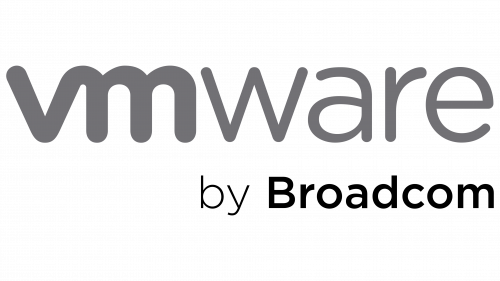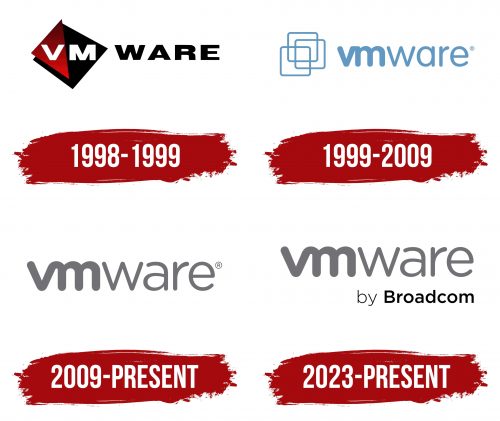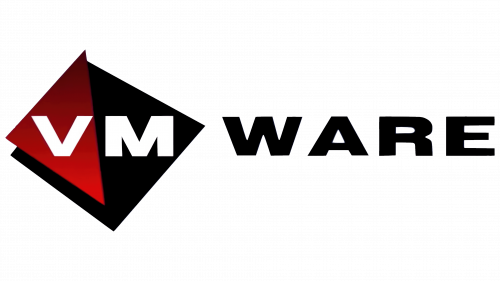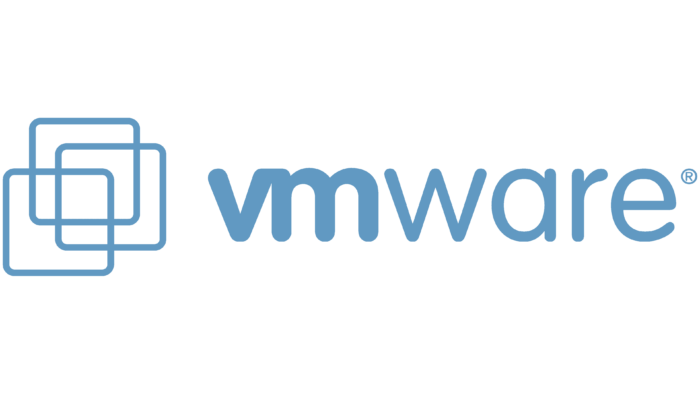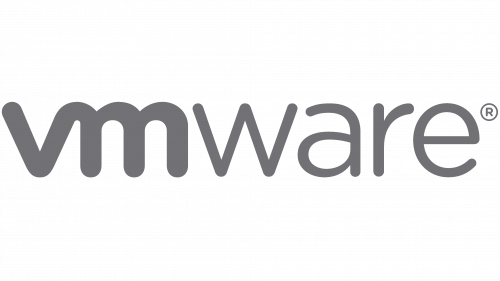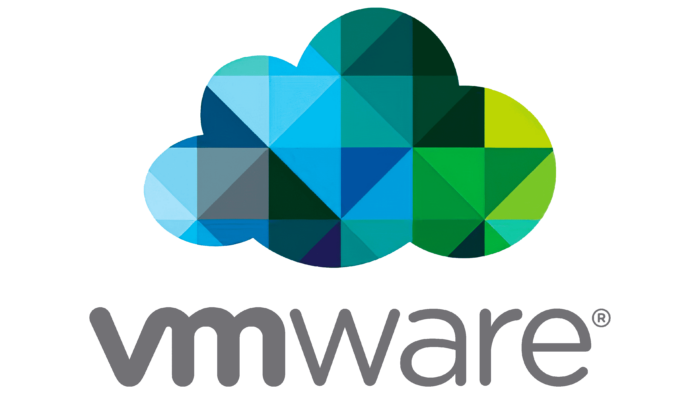The VMware logo demonstrates a direct link between good reckoning and wealth. The software helps create a coherent system of documents and reporting, and the logo focuses on working for clients’ benefit.
VMware: Brand overview
VMware is an American virtualization and cloud computing software company. It was the first to successfully implement the x86 architecture, offering software of the same name for desktops running Microsoft Windows, macOS, and Linux. The organization also develops enterprise digital products for VMware ESXi, which runs directly on server devices without a base operating system. It was founded by a married couple – academic professor Mendel Rosenblum and entrepreneur Diane Greene. Other founders included Edouard Bugnion, Ellen Wang, and Scott Devine.
The company was founded in 1998 in Palo Alto, California, by five talented engineers: Diane Greene, Mendel Rosenblum, Scott Devine, Edward Wang, and Edward Bugnion. They aimed to develop x86 virtualization technology, allowing multiple operating systems to run on a single physical machine.
In 1999, the company released its first product, VMware Workstation. This software enabled users to run multiple virtual machines on a desktop computer. Due to its ability to test software in isolated environments, the product quickly gained popularity among developers and IT professionals.
The year 2001 was pivotal for the company’s growth. The team introduced two server products, GSX Server and ESX Server. These solutions allowed corporate data centers to adopt virtualization technology, opening up new possibilities for optimizing IT infrastructure.
A key moment in the company’s history occurred in 2003 when EMC Corporation acquired it for $635 million. This acquisition allowed the business to maintain operational independence while gaining access to EMC’s resources and customer base.
The company experienced significant growth between 2004 and 2005. It released VMware Player, a free tool for running virtual machines, and VirtualCenter, which provided centralized management of virtual environments.
2006, the company introduced Infrastructure 3, a feature-rich platform for virtualizing data centers. This software included advanced features like VMotion, a live virtual machine migration tool that revolutionized IT infrastructure management.
The year 2007 was historic for the business. Following a successful IPO, the company became one of the most anticipated tech offerings of the year. The IPO provided significant financial resources and cemented its position as a leader in the virtualization industry.
From 2008 to 2009, the team introduced vSphere, a platform for building cloud infrastructures. This technology allowed businesses to create more flexible and efficient IT systems, which was especially important during the economic downturn.
Between 2010 and 2011, the company expanded its operations, focusing on cloud infrastructure management and aggressively developing solutions for mobile devices and desktop virtualization (VDI).
In 2012, the company acquired software-defined networking (SDN) company Nicira for $1.26 billion. This acquisition enhanced the team’s capabilities in network virtualization.
From 2013 to 2014, the business continued developing its cloud technologies. The team launched vCloud Hybrid Service, a public cloud solution that allowed users to easily move workloads between private and public clouds (later renamed vCloud Air).
In 2015, the company introduced Project Photon, a lightweight operating system designed for containerized applications, reflecting its growing focus on containerization.
The years 2016–2017 saw further advancements in cloud and container technologies. The company launched VMware Cloud on AWS, a joint cloud solution developed in collaboration with Amazon Web Services.
In 2018, the company strengthened its position in multi-cloud management by acquiring CloudHealth Technologies. It also introduced Project Dimension, later rebranded as VMware Cloud on Dell EMC, a hyper-converged infrastructure-based hybrid cloud solution.
During 2019 and 2020, the team made strategic acquisitions, including Pivotal Software to enhance application development capabilities and Carbon Black to bolster cybersecurity offerings.
In 2021, the company separated from Dell Technologies and became an independent entity, opening new opportunities for partnerships and strategic growth.
In 2022, Broadcom announced plans to acquire the company for $61 billion, marking one of the largest deals in the tech industry.
As of 2023, the business remains a major player in cloud computing, virtualization, and digital transformation. It continues to develop new technologies to meet market demands and help organizations modernize their IT infrastructures.
Throughout its history, the company has demonstrated its ability to anticipate emerging technological trends and adapt to changing market conditions. As a pioneer in virtualization and a leader in multi-cloud solutions, it has played a pivotal role in shaping the future of the IT industry.
Meaning and History
What is VMware?
It is a leading global virtualization and cloud computing software and services provider. The business focuses on creating technologies that enable multiple operating systems and applications to run simultaneously on a single physical machine or across a network of computers. The products abstract physical resources and create virtual machines that enable companies to build, manage, and operate complex IT systems more efficiently. Solutions for networking, security, cloud infrastructure, data center management, and digital workplaces are part of their offering.
1998 – 1999 (prototype)
Although it never became the official symbol of the company, this logo is a prototype that reflects the ideas and approaches foundational to its early development. At the time, the company was just beginning to exist and was searching for ways to establish itself in the world of virtualization technology.
The main element is the abbreviation “VM” (virtual machine), placed on a dark red diamond-shaped background. The red color symbolizes ambition and a drive for innovation, which were important to the young company. The use of a black background highlighted the seriousness and reliability of the company’s technologies.
The font of the “VM” letters is simple and bold, emphasizing the importance of virtualization as the company’s core technology. These two letters reflect this concept’s central role in shaping the brand’s development strategy. The diamond shape conveys the idea of stability and precision, which are crucial in computing technology.
The word “WARE” is rendered in black with a minimalist and strict font, emphasizing technology and seriousness. This separation of the logo into “VM” and “WARE” reflects the essence of the company: virtual machines and the software that supports their operation.
Although this emblem was just a prototype, it conveyed the company’s essence at its formation. The logo design was later revised, and the company adopted a more refined and modern approach to visualizing its ideas. Still, this early version gives us insight into the company’s first steps toward success.
1999 – 2009
The logo consists of three squares with rounded corners. They are chaotically superimposed and form another geometric figure in each intersection – squares, triangles, and vertical and horizontal rectangles. This indicates the versatility of software products and the property of combining virtual elements into a whole. The lines are soft and smooth. In a similar style, inscriptions are located on the right side. They are typed in streamlined and slightly rounded letters in lowercase. The compound word “vmware” is semi-connected; almost all the characters are disconnected and stand at some distance from each other, except for the first two. There is a ligature at the top between “vm,” so it appears the characters flow one into the other. Moreover, they are in bold type, while all the following ones are in regular type. The logo’s main color is a soft blue of the mauve spectrum.
2009 – today
The VMware logo, introduced in 2009, symbolizes the simplicity and technological focus of the company, which was already recognized as a leader in virtualization by that time. The company aimed to showcase its ability to provide simple yet powerful solutions for complex IT challenges through its minimalist and straightforward design.
The logo was almost the same as the original version during this period. The difference is in the color performance: before, it was light, and now it is dark. In addition, the designers removed the thin square frame on the left and left only the name of the digital virtualization service.
The sans-serif font is soft and rounded, emphasizing the technology’s user-friendliness and accessibility. The rounded shapes of the letters, especially “v,” “m,” “a,” and “w,” evoke a sense of fluidity and flexibility—qualities that define the company’s products. The technology allows users to work with virtual machines effortlessly, and this ease is reflected in the logo’s font.
The logo’s gray color emphasizes the company’s seriousness and stability. In the branding of tech companies, gray often symbolizes professionalism and reliability. In VMware’s case, it reflects the company’s goal of solidifying its position in the market while continuing to innovate. The simplicity and modernity of the logo underscored VMware’s commitment to providing technologically advanced solutions in formats that are both understandable and accessible to users.
2023 – today
The updated VMware logo symbolizes the company’s continued operations under its new owner, Broadcom. While the core of the emblem remains unchanged, subtle modifications highlight a new chapter in the brand’s history. The logo still features a minimalist design, with a strong emphasis on simplicity and technological precision.
The gray color of the VMware name represents stability, confidence, and reliability, which is crucial for a company specializing in cloud technologies and virtualization. This color choice underscores the brand’s neutrality and technical focus, conveying seriousness and professionalism.
The font remains unchanged—smooth and rounded, it conveys a sense of progressiveness and modern technology. Symbolically, the font’s roundness and softness contrast with the sharpness of the company’s technologies, creating a balance between technical capabilities and ease of use.
The addition of “by Broadcom” at the bottom of the logo is a new feature that appeared after VMware’s acquisition in 2022. The mention of Broadcom is rendered in a more traditional, strict black font, highlighting the prestige and solidity of the new owner. This emphasizes the company’s transition into a new era, retaining its core values while adopting a new strategic direction.
The visual mark has become a symbol of the integration of the two companies and their merger. Broadcom’s ownership underscores its key role in the brand’s further development without altering its fundamental principles, reflected in the emblem’s clean and concise form.
Font and Colors
By removing the three squares that used to be in front of the word “VMware,” the developers combined them into one geometric figure of a similar shape with a dark gray fill. The icon also features the first two letters of the organization’s name, designed in the same style as the main inscription.
For its identity, the company of virtual computer technologies chose a soft font without serifs. It resembles Calibri in combination with Bahnschrift as much as possible. The current color version consists of business tones: graphite gray on a white background.
